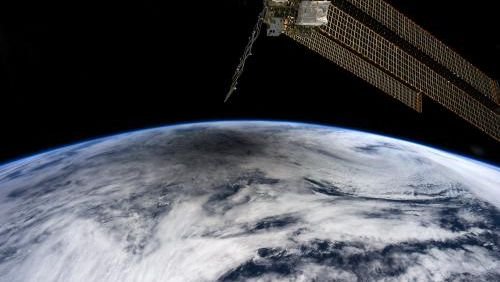On Oct. 2, an annular solar eclipse will be visible from the Southern Hemisphere. During this event, the moon doesn’t completely cover the sun from our perspective on Earth, so it leaves a “ring of fire” around the moon.
The moon’s shadow will appear to travel at vastly different speeds depending on your location. In some places, it will move faster than 6 million mph (10 million km/h); in others, it will travel as slow as 1,278 mph (2,057 km/h), or about the speed of a fighter jet.
During the annular solar eclipse, the moon’s shadow will be projected onto Earth from northwest to southeast, but because the planet is round, the shadow will travel across a curved surface. Consequently, the distance between a place experiencing the eclipse and the moon will change constantly. So will the orbital speed of the moon. Put together, those factors mean the speed of the shadow will vary drastically.
Here’s a look at where the moon’s shadow will move the fastest and the slowest so you can plan for the 2024 annular solar eclipse. Remember, during an annular solar eclipse, it is NEVER safe to look directly at the sun without solar eclipse glasses designed for solar viewing. Read our guide on how to observe the sun safely.
Related: Where can I see the annular solar eclipse on Oct. 2, 2024?
Where the annular eclipse will move the fastest
The event will begin as an eclipsed sunrise, peak at midday and end with an eclipsed sunset. The curvature of Earth makes a huge difference in the apparent speed of the moon’s shadow across its surface, with the extremes of the path seeing by far the fastest speeds. After all, that’s where the shadow strikes Earth at the most extreme tangent.
As it first strikes the middle of the Pacific Ocean, south of Hawaii, the moon’s “antumbral” shadow — within which the “ring of fire” will be visible — will move at an astonishing 5.31 million mph (8.55 million km/h), according to Xavier Jubier’s interactive eclipse map. As it departs the planet 229 minutes later, close to the island of South Georgia in the southern Atlantic Ocean, it will do so at 6.25 million mph (10 million km/h).
At these precise moments, the moon’s shadow will be touching and leaving Earth, so the speed of the shadow will be essentially infinite. That renders these alarming figures largely meaningless. Therefore, it’s more useful to consider the shadow’s speed at the points where the ring of fire appears dead on the horizon. At those points, the moon’s shadow will travel at 5,131 mph (8,258 km/h) and 8,893 mph (14,312 km/h), respectively.
Where the annular eclipse will move the slowest
The ring of fire will last the longest when the moon’s shadow moves the slowest. In this case, the ring of fire will appear for 7 minutes, 25 seconds, as seen only from a point in the Pacific Ocean northwest of Easter Island/Rapa Nui, where the moon’s shadow will move at a paltry 1,278 mph (2,057 km/h).
Why so slow? At this point, it will be local midday, with the sun as close to overhead as it gets (about 68 degrees above north), and the distance between Earth and the moon will be at its minimum. Therefore, the moon’s shadow will be as close to perpendicular to the surface as it gets, so it will appear to move at its slowest. This is where the shadow will take the longest to move across Earth’s surface, so from within it, the ring of fire will be visible for the longest time.
Source link
